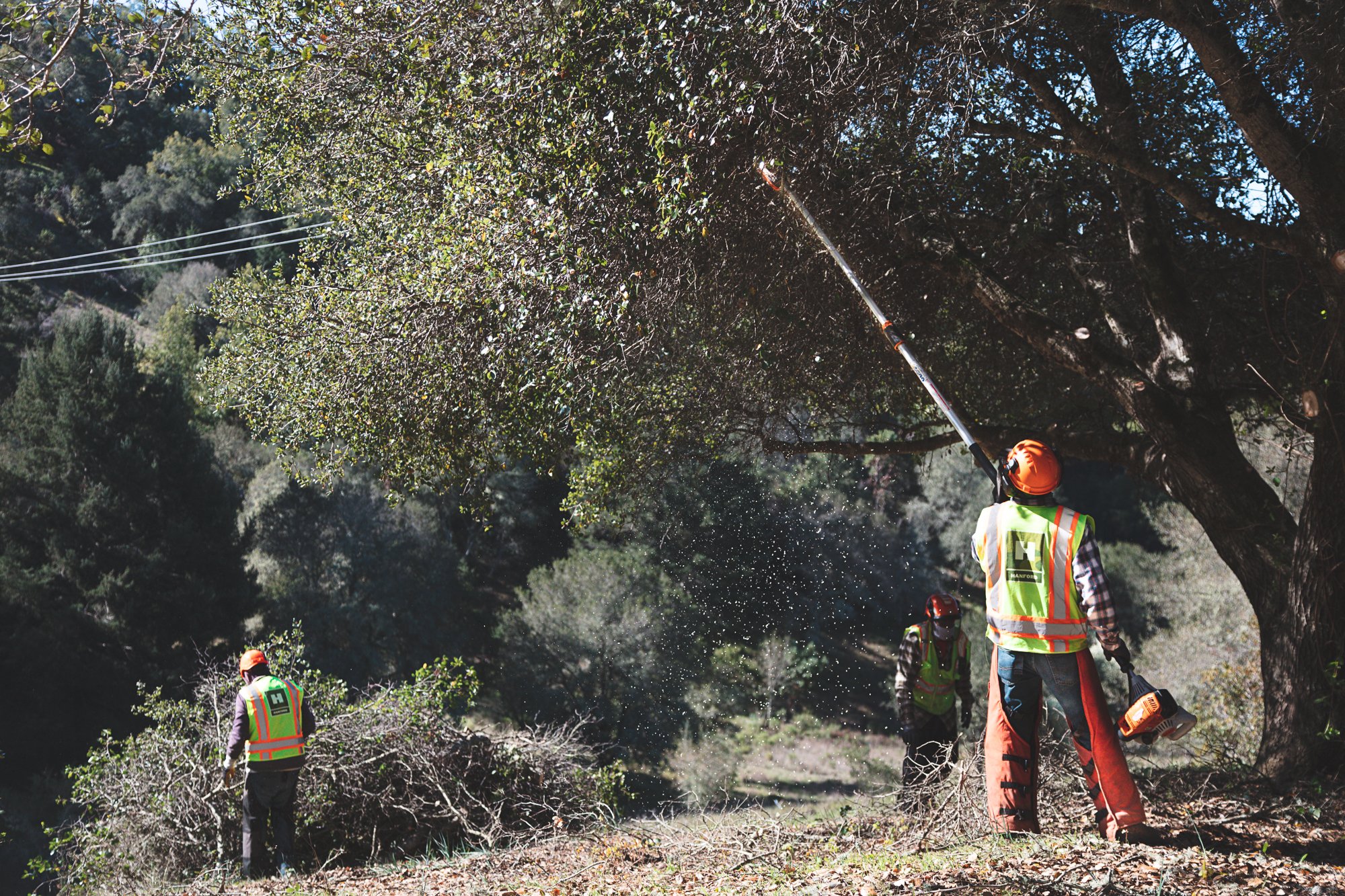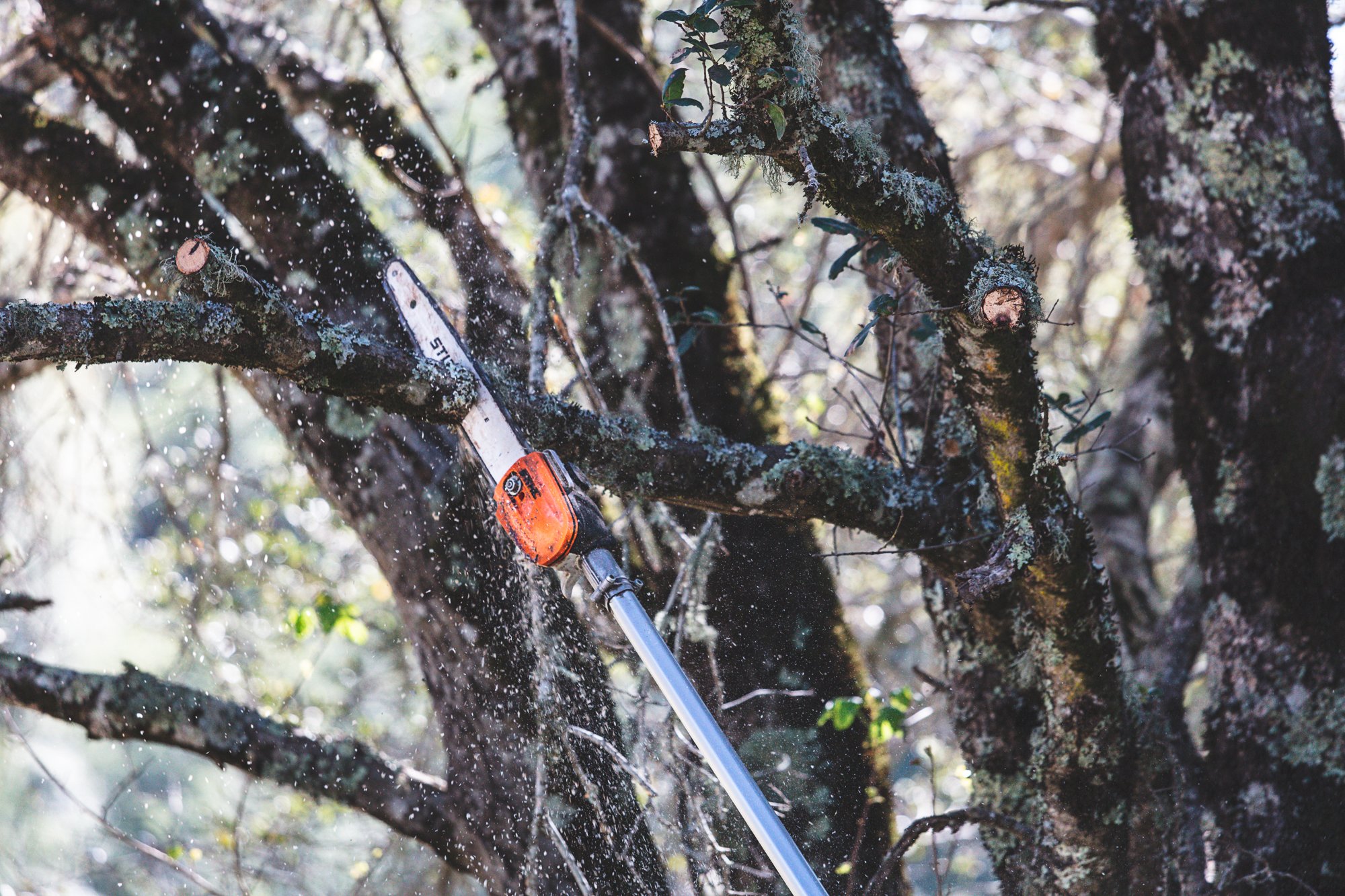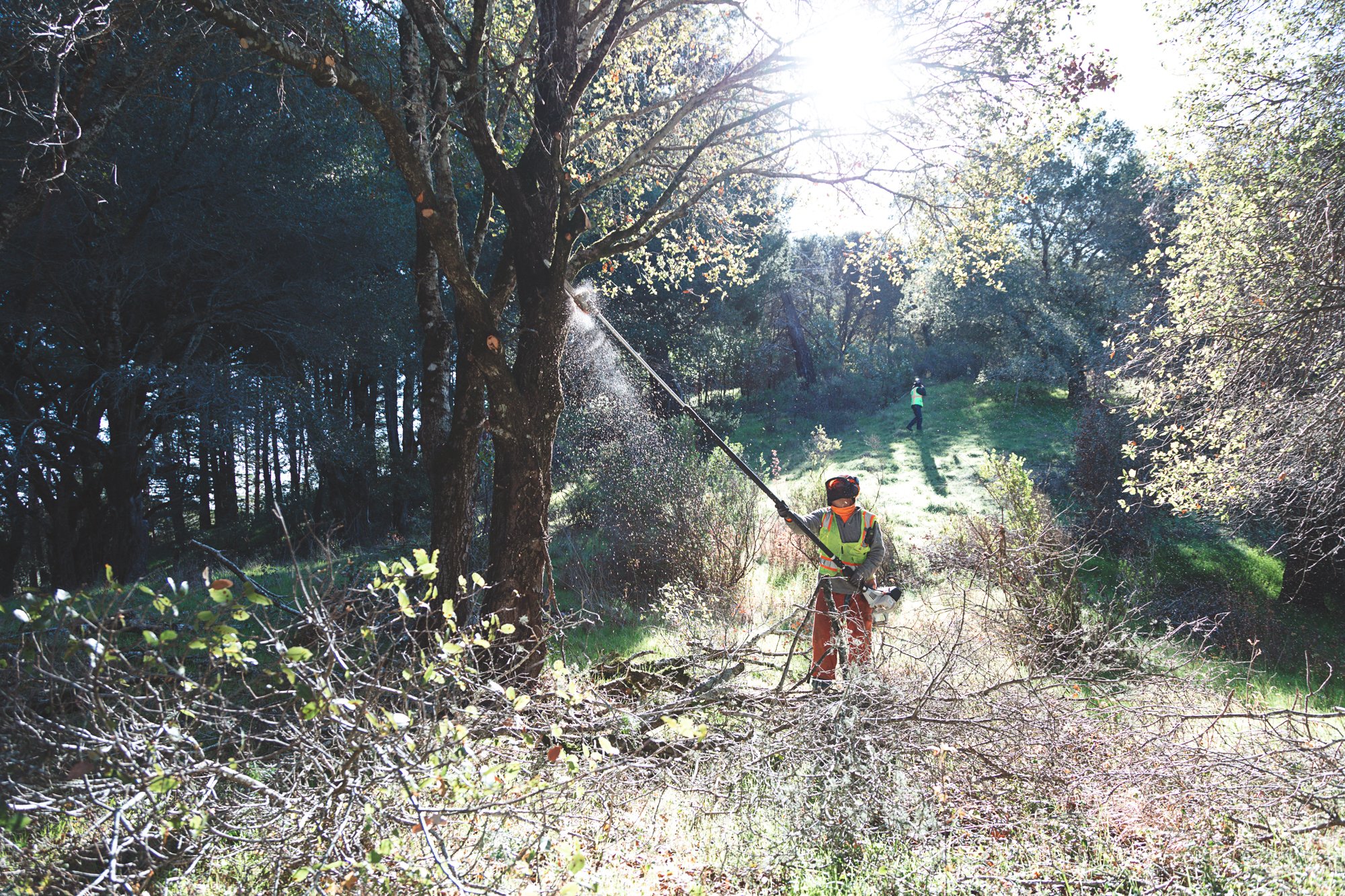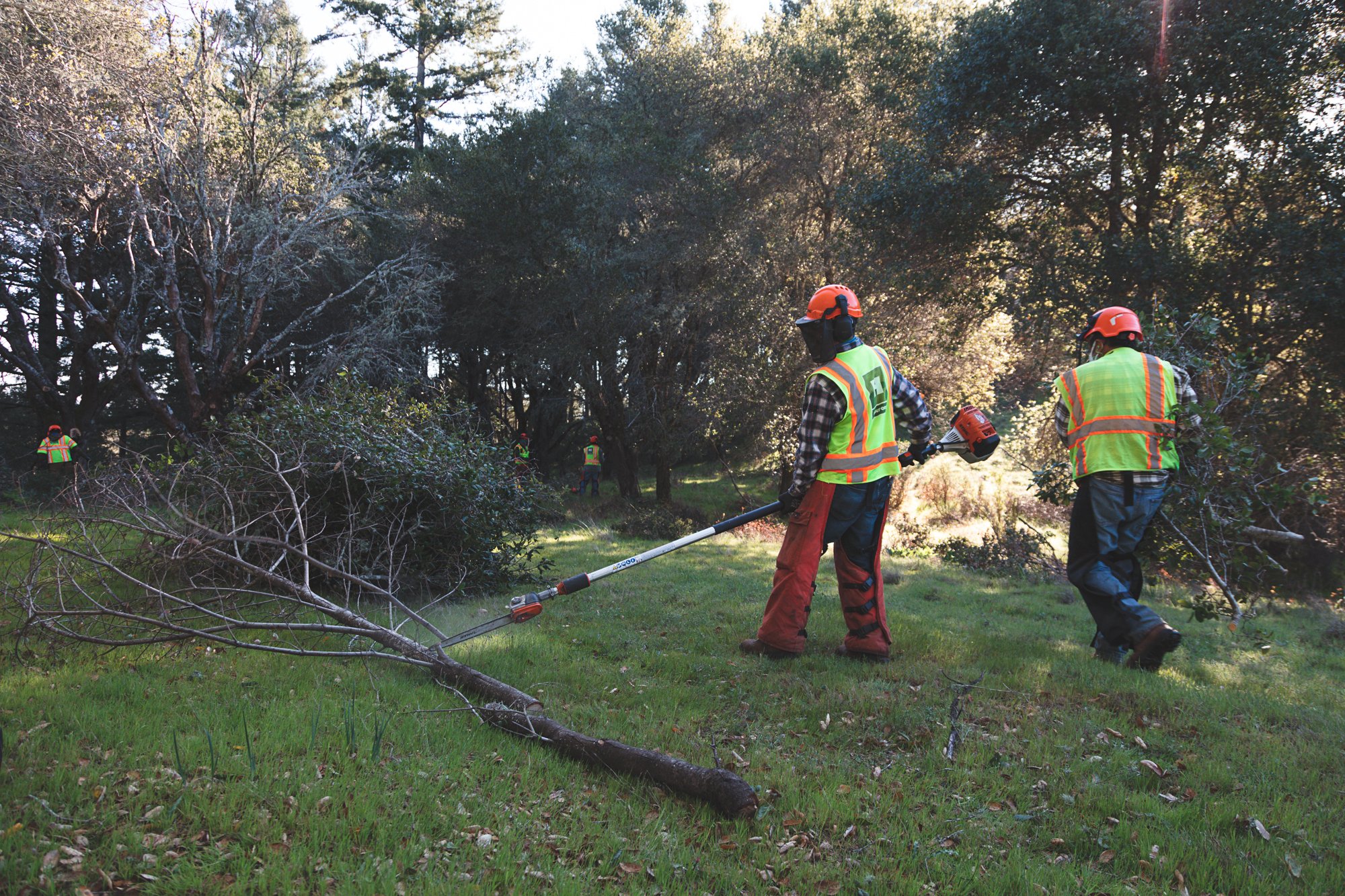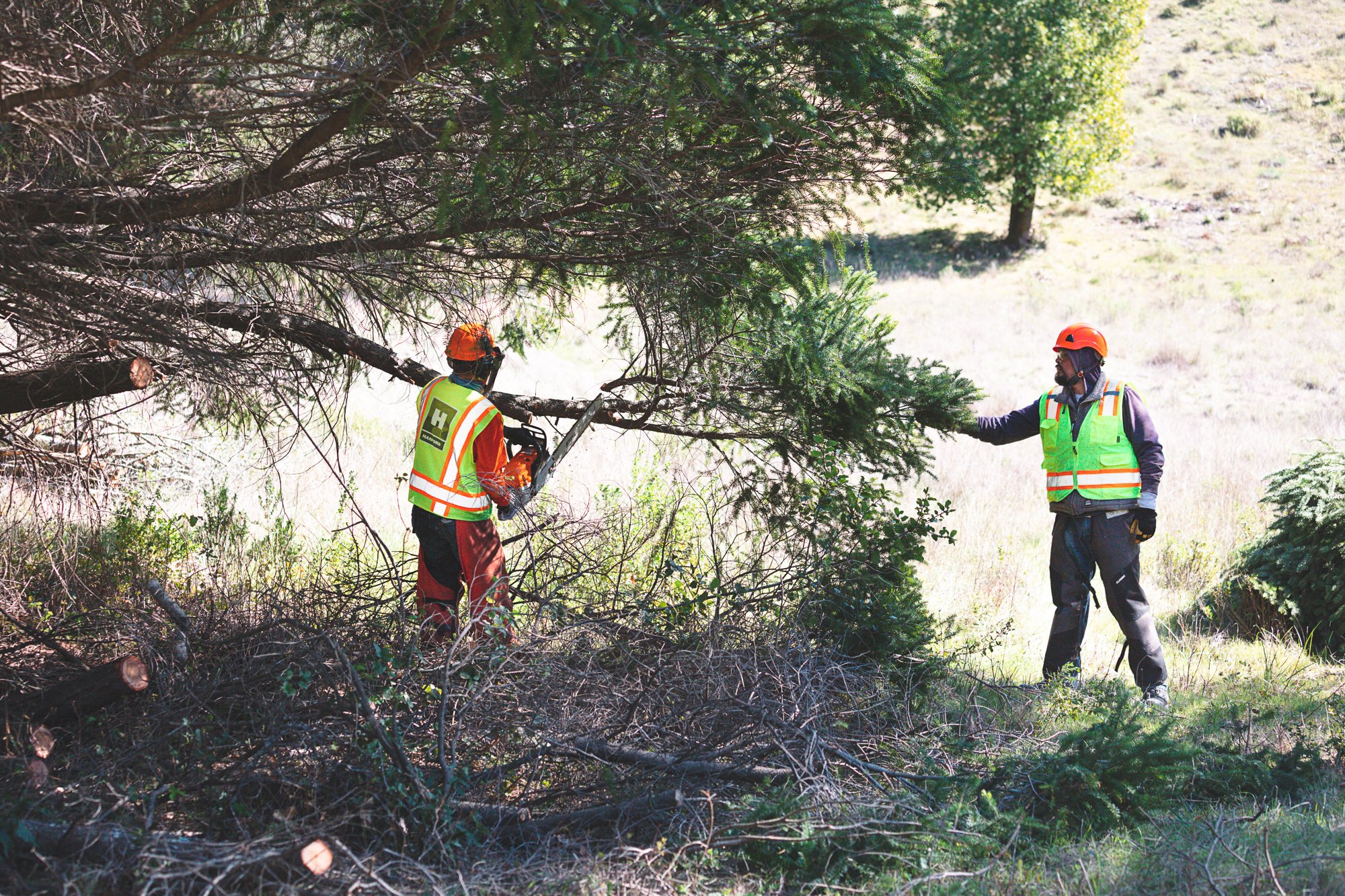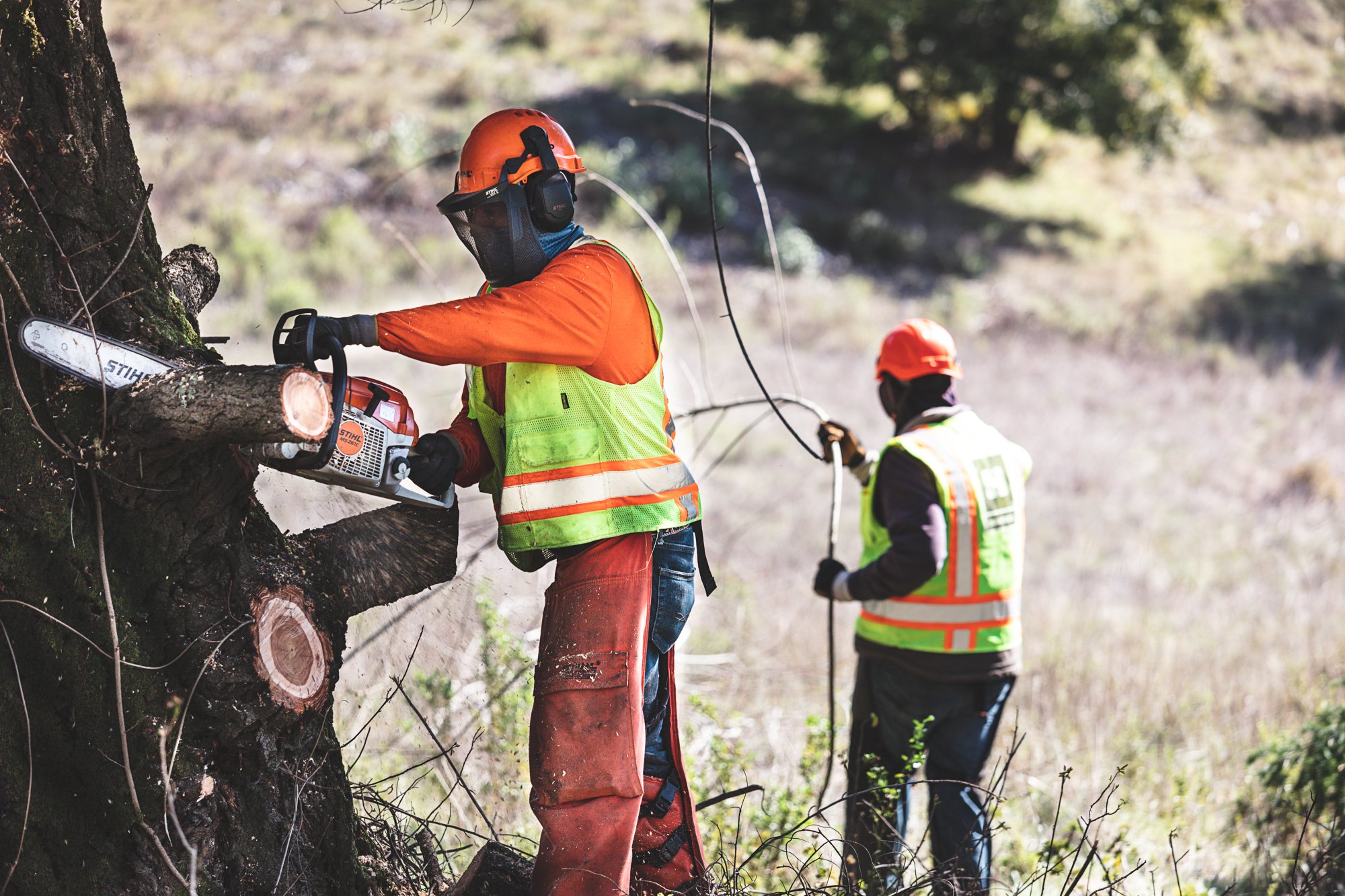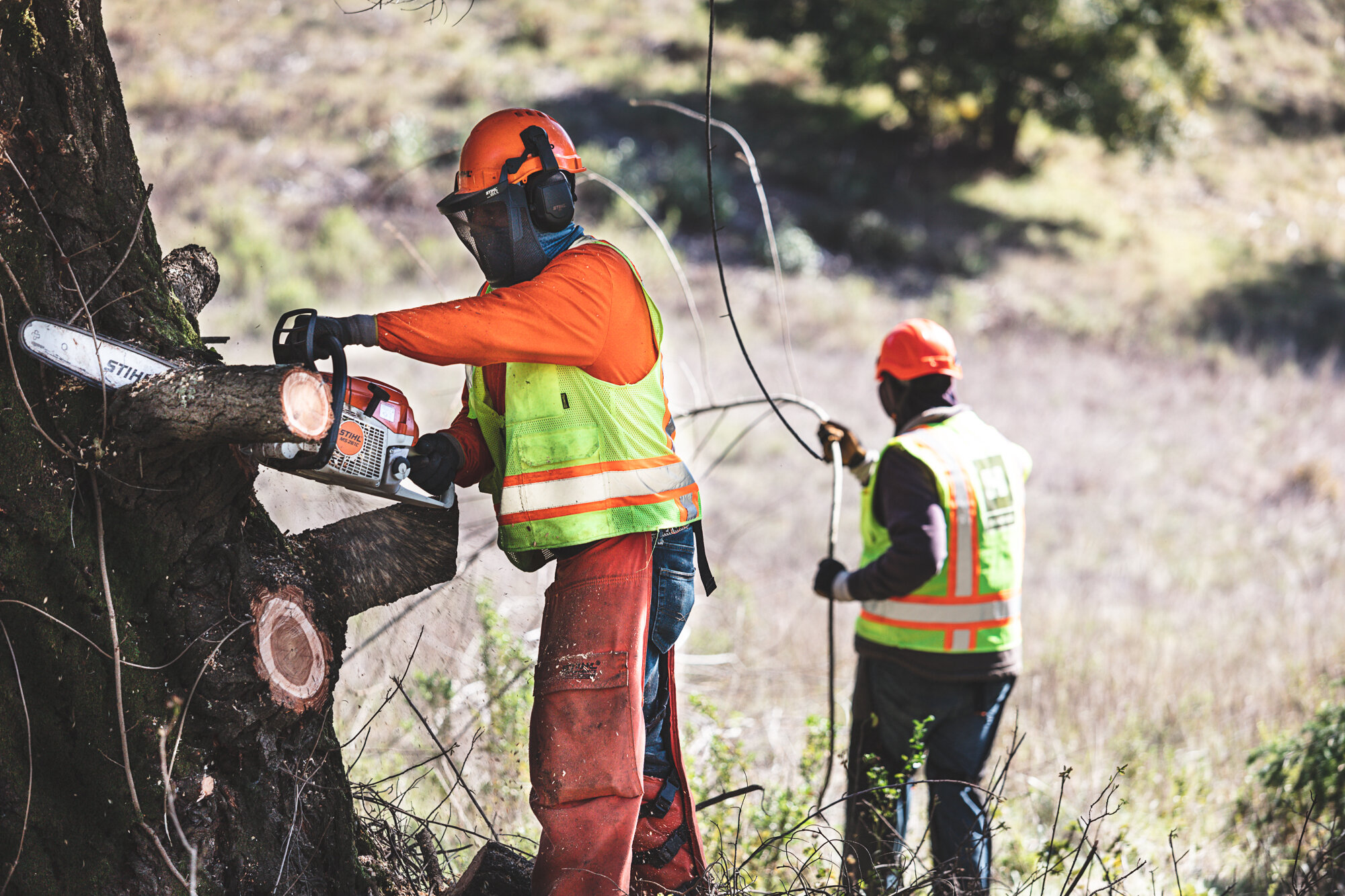Marin Municipal Water District Fuel Reduction & Restoration 2020-2022
This project is being conducted under the direction of a MMWD Watershed Maintenance Supervisor or Natural Resources Manager. Its purpose is reducing fuel loads within Sudden Oak Death impacted redwood and Douglas-fir dominated forest stands, reducing Douglas fir tree encroachment into Oak woodlands and grasslands, removing invasive plants such as French broom using manual methods, installing native plants at restoration sites, and routing restoration site maintenance including hand watering and weeding on the Mt. Tamalpais Watershed and within Lagunitas Creek.
Work conducted includes but is not limited to the following: felling and bucking of select trees (<12” DBH), on-site mastication and/or chipping of understory brush and/or pilling slash (<6” DBH) for later burning by MMWD, hand pulling non-native plants, installing native plants, and hand-watering.
DIVISION: Land Management
Location: Corte Madera, CA
CLIENT: Marin Municipal Water District
Date of Start: January 2021
Date of Completion: June 2020
Project Goals
Slash Management Specifications
Masticate: using a skid-steer with forestry attachment, mechanically masticate in place understory shrubs, diseased trees, and select snags (<12” DBH). Resulting mulch spread to a depth no grater than 6 inches.
Buck: for felled trees (>12” DBH), remove and cut boles into lengths just sufficient to ensure ground contact. Minimal cutting of boles.
Lop and scatter: Cutting and spreading of slash, brushed shrubs and limbs (<4” DBH) on-site to depth not exceeding 6 inches.
Pile: Not on water ways, at least 30 feet from any structure, not exceeding 4 inches in diameter (circular piles 8 feet in diameter) and 4 feet high, away from under canopy of retained trees, spaced at least 16 feet apart.
Chip and broadcast: to depth not to exceed 6 inches.
General Brush and Small Tree Treatment
Understory shrubs and dead or diseased trees less than 12 inches DBH removed.
All stumps flush cut as low as possible parallel to the slope of the ground surface.
For retained trees, dead limbs cut up to 10 feet above ground or up to 1/3 of the tree’s total live foliage, whichever is less.
Native Plant Restoration:
Installation of native plants at restoration sites on Mt. Tamalpais or Lagunitas Creek.
Routine watering using water buffalo truck.
Priority invasive plants removed from restoration site by hand pulling or cutting using a weedeater.
Protection of Plants and Habitat
Location of areas needing special measure for protection of plants, animals, and heritage resources identified and appropriate mitigations implemented in advance of work.
Wood rat nest avoided when removing vegetation and nests not disassembled.
Invasive Management
Removal of non-native invasive plants using manual methods such as hand pulling or weed wrench.
Management of non-natives within fuelbreaks using mechanical methods, which include masticating with skid steer or cutting using weedeater or brush cutters.

